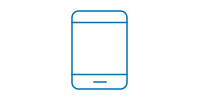Welcome
The BRIGHT Institute
Behavioral Research Insights & DiGital Health Technology (BRIGHT) Institute
The BRIGHT Institute supports research on digital health technologies and their application to public health, promoting healthy behaviors, and preventing disease. Digital health technologies include all digital media and devices, such as the internet, mobile phones, social media, apps, SMS. The BRIGHT Institute supports faculty conducting research on the use of these technologies as platforms for interventions, to conduct surveillance (infodemiology), and to evaluate the effectiveness of new digital media as they emerge.
Behavorial
Research
There is an emerging evidence base of how to use digital media for behavior change. Strategies to change behavior implemented using digital technology have included a variety of platforms (e.g., text messaging, social media, apps) and program strategies (e.g., social media support groups and tailored coaching) all of which are potentially more effective with increased frequency, intensity, interactivity, and feedback.
Insights
The field of digital media for behavior change is characterized by its use of digital device-human interactions as an intervention strategy. Formative research using digital media, and specifically social media platforms, has tremendous potential to provide insight into behavior change campaign design and implementation. For example, data are accessible on social media from highly targeted groups of users, which can be used in real time to design tightly focused behavior change interventions.
DiGital
Digital media for behavior change uses all features of digital devices to communicate and create environmental cues and incentives (i.e., following behavioral economics) that encourage adoption of new behaviors and maintenance of existing ones. Digital interventions have the flexibility to be based on tailored, individual communication and on group-level communication, such as in social media groups, enabling engagement, interaction, and social support.
Health
Recently, the use of digital media for health behavior change has been pronounced. Digital media can create a sense of widespread support for and adoption of specific health behaviors. A kind of bandwagon effect may result, leading to behavior change. The effect of such social media campaigns may be to promote a social norm in support of specific health behaviors, such as vaccination, healthy eating and physical activity, or avoidance of nicotine consumption.
Technology
While the evidence base supporting BRIGHT is relatively small and recent, the field is growing. Future research and programs should expand the domains of subject matter addressed by digital media for behavior change. More rigorous studies are needed and the field will need to stay current with rapidly emerging new digital technologies. The interaction and potential for multiple digital platforms to contribute to behavior change needs to be rigorously investigated in coming years.
.png)








